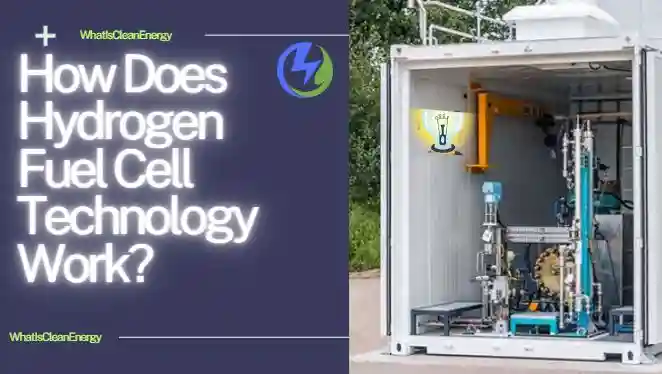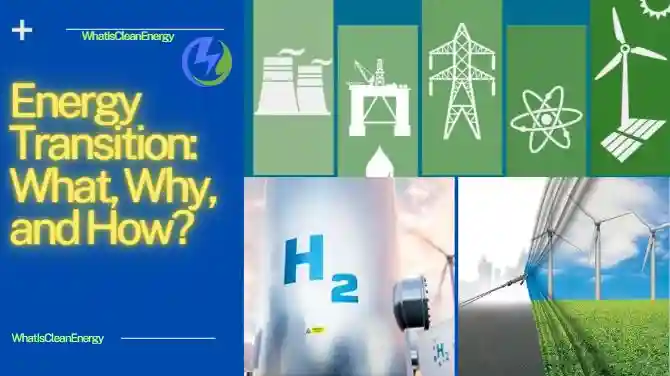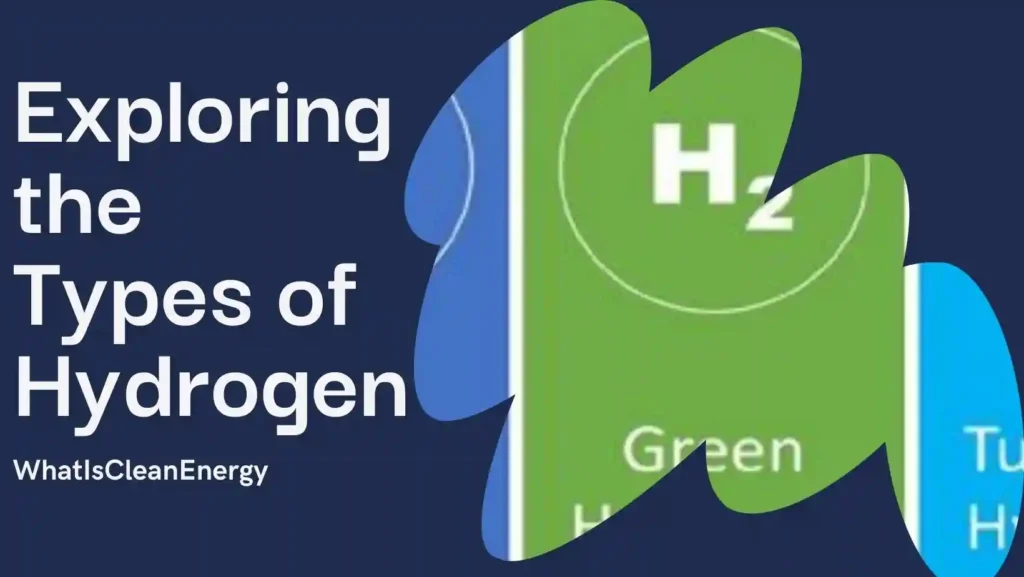Hydrogen fuel cell technology is a way of producing electricity from hydrogen and oxygen without burning them. It is a clean and efficient alternative to fossil fuels, as it only produces water as a by-product. In this article, we will explain how hydrogen fuel cell technology works. What are its advantages and disadvantages, and what are some of its applications?
Hydrogen Fuel Cell
Hydrogen is the simplest and most abundant element in the universe. It is a major component of water, oil, natural gas, and all living matter. However, hydrogen rarely occurs naturally as a gas on Earth. It is almost always combined with other elements, such as carbon or oxygen. To use hydrogen as a fuel, we need to separate it from these compounds.
One way to do this is by using renewable energy sources, such as solar or wind power, to split water into hydrogen and oxygen. This process is called electrolysis. Another way is to use biomass or natural gas as a source of hydrogen. This process is called reforming.
Once we have hydrogen gas, we can use it to generate electricity in a device called a fuel cell. A fuel cell is similar to a battery, but it does not run out of charge as long as it has fuel and oxygen. A fuel cell converts the chemical energy of hydrogen and oxygen into electrical energy through a pair of reactions.
How does a fuel cell work?
A typical hydrogen fuel cell consists of two electrodes (an anode and a cathode) separated by an electrolyte membrane. The electrolyte membrane allows protons (positively charged hydrogen atoms) to pass through, but blocks electrons (negatively charged particles).
The fuel cell works in the following way:
- Hydrogen gas enters the fuel cell through the anode. Here, it reacts with a catalyst (usually platinum) and splits into protons and electrons.
- The protons pass through the electrolyte membrane to the cathode. The electrons flow out of the cell and create an electric current that can power an electric motor or other devices.
- Oxygen gas from the air enters the fuel cell through the cathode. Here, it reacts with the protons and electrons to form water.
- The water exits the fuel cell as steam or liquid.
The overall reaction of a hydrogen fuel cell is:
2H2 + O2 -> 2H2O + electricity + heat
The diagram below shows how a hydrogen fuel cell works
Hydrogen Fuel Cell Diagram

Advantages of Hydrogen Fuel Cell Technology
Hydrogen fuel cell technology has several advantages over conventional fossil fuels, such as
- It is clean: Hydrogen fuel cells only produce water as a waste product. Unlike fossil fuels that emit carbon dioxide and other pollutants that contribute to global warming and air pollution.
- Efficient: Hydrogen fuel cells can convert up to 60% of the chemical energy of hydrogen into electrical energy. It is compared to 20-30% for internal combustion engines.
- Renewable: We can make hydrogen from sources like solar or wind power, biomass, or natural gas, which can be renewed.
- Versatile: Hydrogen can be stored in tanks or pipelines and transported to different locations. It’s versatile and can power cars, buses, trains, planes, ships, homes, factories, and power plants.
Disadvantages of Hydrogen Fuel Cell Technology
Hydrogen fuel cell technology also faces some challenges and limitations, such as:
- It is expensive: Hydrogen fuel cells are still costly to produce and maintain, mainly due to the use of rare metals like platinum as catalysts. The cost of hydrogen production and distribution is also high compared to fossil fuels.
- Difficult to store: Hydrogen gas has a low density and takes up a lot of space. To use hydrogen practically, we have to compress or cool it, which takes extra energy and equipment. This makes it easier to store.
- It is risky: Hydrogen gas is highly flammable and explosive when mixed with air. It can also leak easily from tanks or pipes due to its small size. Therefore, it requires special safety measures and regulations to handle and transport.
What are some examples of hydrogen fuel cell applications?
Hydrogen fuel cells make electricity and water from hydrogen and oxygen. They can be used for many things, such as:
- Transportation: Hydrogen fuel cells can run cars, buses, trucks, trains, and planes. They are better than engines or batteries because they use less fuel, cause less pollution, go farther, and fill up faster. Some cars that use hydrogen fuel cells are the Toyota Mirai and the Hyundai Nexo. Some trains and planes that use hydrogen fuel cells are the Alstom Coradia iLint and the Airbus ZEROe.
- Industry: Hydrogen fuel cells can run machines on farms. Also, it can be used in factories for things like forklifts, generators, welders, and coolers. They save money and help the environment by using less electricity and diesel. Some machines that use hydrogen fuel cells are the Plug Power GenDrive, Ballard FCgen-H2PM, Hydrogenics HyPMTM HD Series, and Linde H2O2GO.
- Residential: Hydrogen fuel cells can provide electricity and heat for homes and buildings. Fuel cells for clean energy can work alone or with other green energy sources. Hydrogen fuel cells can also help in emergencies when the grid is down. Clean and green fuel cells can make homes and buildings more secure, cheaper, greener, and cleaner. Some systems that use hydrogen fuel cells for homes and buildings are the Ene-Farm, the BlueGen, the Viessmann Vitovalor PT2, and the Doosan PureCell Model 400.
Examples of hydrogen fuel cells in use today
Some examples of hydrogen fuel cells in use today are:
- Cars: Several car manufacturers (such as Toyota, Honda, Hyundai, or Mercedes-Benz) have developed or launched hydrogen fuel cell vehicles that run on hydrogen gas and emit only water vapor.
- Buses: Several cities around the world (such as London, Berlin, or Beijing) have deployed or tested hydrogen fuel cell buses that offer zero-emission public transportation.
- Trains: Germany, France, and Japan have created and tested hydrogen fuel cell trains. These trains can run on tracks that aren’t electrified.
- Forklifts: Walmart, Amazon, and Coca-Cola are using or testing hydrogen fuel cell forklifts. These forklifts run longer and produce fewer emissions compared to battery-powered ones.
- Backup power: Hospitals, data centers, and telecom towers are installing or planning to use hydrogen fuel cell systems. These systems offer emergency backup power in case the grid goes down.
Future Challenges and opportunities for hydrogen fuel cell technology
Some challenges and opportunities for hydrogen fuel cell technology in the future are
- Cost reduction: Hydrogen fuel cells are expensive. We need more research and innovation to make them cheaper, including reducing the cost of material manufacturing, and operation.
- Hydrogen production: Making hydrogen for fuel cells can be not very green. We need to find better ways to make it from clean sources like solar or wind power, and use clean methods like electrolysis.
- Hydrogen storage: Storing and delivering hydrogen can be tricky. We need better solutions to store it in a compact, safe way, and deliver it conveniently through pipelines or trucks.
- Hydrogen integration: To make hydrogen work well with other energy sources, we need to find ways to use it with electricity, natural gas, and biofuels. We also need to balance how much hydrogen different sectors like transport, industry, and buildings need.
Conclusion
Hydrogen fuel cells are devices that produce electricity and water from hydrogen and oxygen. They have various applications in transportation, industry, and residential sectors. They offer advantages such as high efficiency, low emissions, and reliability. However, they also face challenges such as high costs, safety issues, and lack of infrastructure. Hydrogen fuel cells are a promising technology for the future of energy. But they need more research, development, and support to overcome the barriers and achieve their full potential.
Sources and further references:
- Hydrogen and Fuel Cell Technology Basics – Department of Energy
- Hydrogen fuel cells, explained – Airbus
- Fuel cell – Wikipedia
- How Do Fuel Cells Work? – Smithsonian Science Education Center
- Hydrogen Fuel Cell Vehicles – Alternative Fuels Data Center
- Hydrogen Fuel Cells – Energy.gov.au




